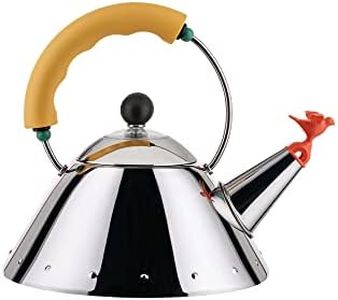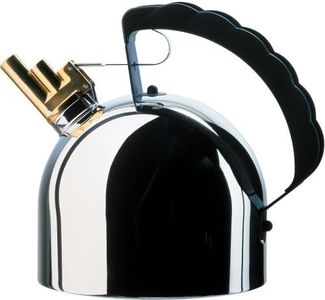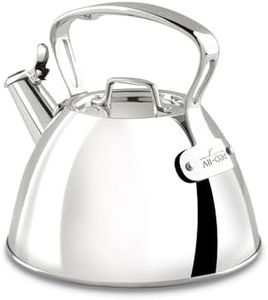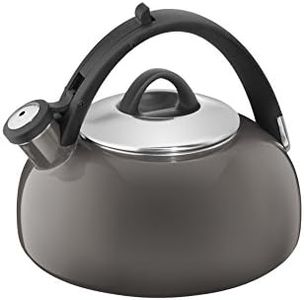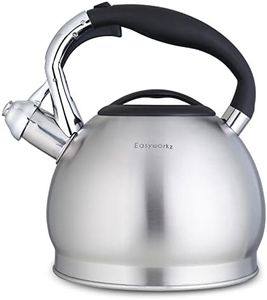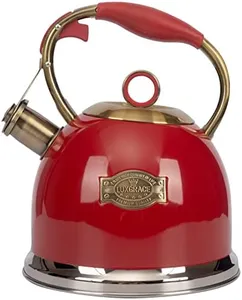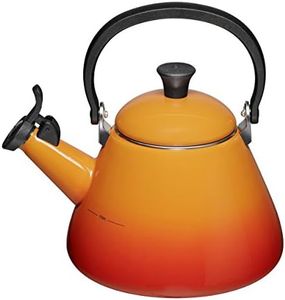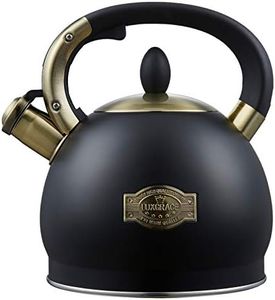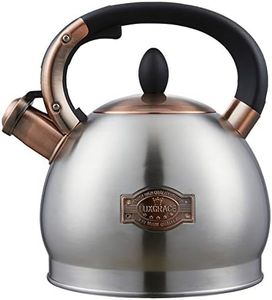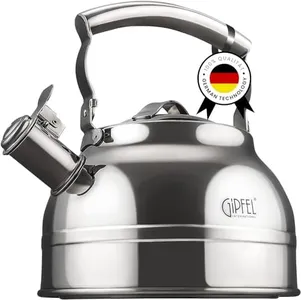We Use CookiesWe use cookies to enhance the security, performance,
functionality and for analytical and promotional activities. By continuing to browse this site you
are agreeing to our privacy policy
10 Best Whistling Tea Kettles
From leading brands and best sellers available on the web.Buying Guide for the Best Whistling Tea Kettles
Choosing a whistling tea kettle can be a pleasant task if you know what features to look for and how to match them to your daily needs. While they may seem simple, tea kettles can vary widely, and a thoughtful choice ensures not just a good cup of tea, but also safety, durability, and convenience in your kitchen.CapacityCapacity refers to the amount of water a tea kettle can safely hold, usually measured in liters or quarts. This is important because it determines how many cups of tea you can make in one boil. Smaller kettles (around 1 to 1.5 liters) are ideal for individuals or couples, quick boils, or small kitchens, while medium kettles (1.5 to 2 liters) suit small families. Large kettles (over 2 liters) are best if you regularly serve tea to many people or want to boil more water at a time. Think about how many cups you usually prepare at once to guide your choice.
MaterialTea kettles are most commonly made from stainless steel, enamel-coated steel, glass, or sometimes copper. Material affects durability, heat retention, appearance, and ease of cleaning. Stainless steel is known for being sturdy and rust-resistant. Glass allows you to see the water level inside (though it's more fragile). Enamel-coated kettles offer vibrant colors and easy cleaning but should be handled carefully to avoid chipping. Choose a material based on your priority for looks, durability, and maintenance.
Whistle LoudnessThe whistle is a key safety and convenience feature, alerting you when the water is boiling. Some kettles whistle gently, while others are loud and shrill. If your kitchen is often noisy or you tend to get distracted, a louder whistle is more helpful. If you prefer peace and quiet or live with noise-sensitive people, consider a model known for a softer tone. Consider your household's environment and your own habits when making this choice.
Handle Design and ComfortThe handle is where you grip the kettle to pour. A good handle should stay cool to the touch and provide a secure, comfortable grip. Some are designed to be heat-resistant or have ergonomic shapes. For extra safety and ease, look for handles with a non-slip surface or finger grooves. If you have limited hand strength or mobility challenges, prioritize kettles with larger or padded handles.
Compatibility with Heat SourcesNot all kettles work on every stovetop. Some are designed only for gas or electric stoves, while others are also compatible with induction cooktops. It’s important to check this compatibility to ensure the kettle will work on your stove at home. If you have or are planning to get an induction stove, make sure the kettle is clearly labeled as induction-compatible.
Ease of CleaningA kettle's design affects how easy it is to keep clean inside and out. Wider lids or spouts make it easier to reach inside for thorough cleaning, and certain materials like glass or stainless steel resist limescale and stains better. If you live in an area with hard water or plan frequent use, prioritize kettles with accessible interiors for regular descaling and cleaning.

